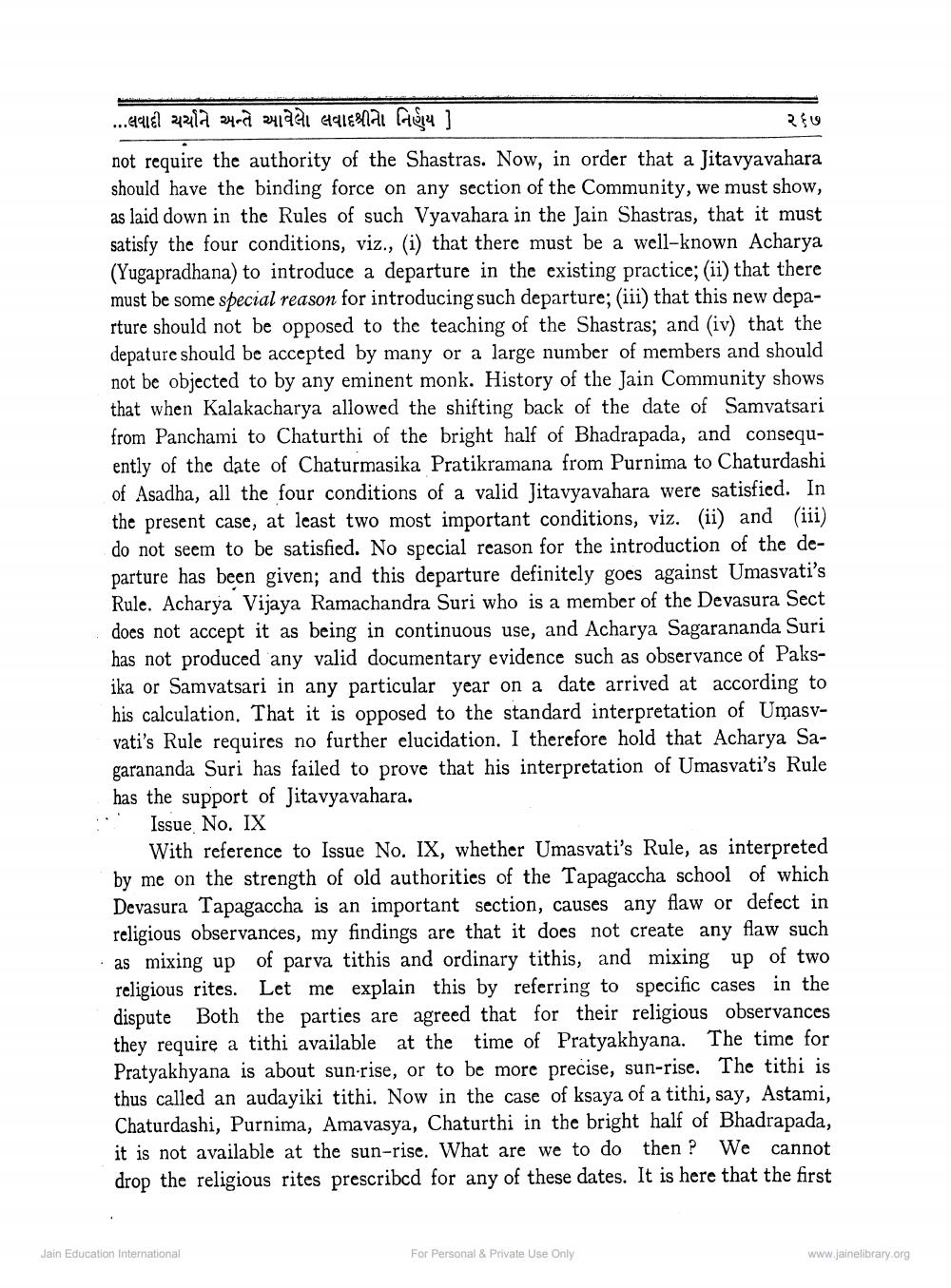________________
...લવાદી ચર્ચાને અન્તે આવેલા લવાદશ્રીના નિર્ણય ]
not require the authority of the Shastras. Now, in order that a Jitavyavahara should have the binding force on any section of the Community, we must show, as laid down in the Rules of such Vyavahara in the Jain Shastras, that it must satisfy the four conditions, viz., (i) that there must be a well-known Acharya (Yugapradhana) to introduce a departure in the existing practice; (ii) that there must be some special reason for introducing such departure; (iii) that this new departure should not be opposed to the teaching of the Shastras; and (iv) that the depature should be accepted by many or a large number of members and should not be objected to by any eminent monk. History of the Jain Community shows that when Kalakacharya allowed the shifting back of the date of Samvatsari from Panchami to Chaturthi of the bright half of Bhadrapada, and consequently of the date of Chaturmasika Pratikramana from Purnima to Chaturdashi of Asadha, all the four conditions of a valid Jitavyavahara were satisfied. In the present case, at least two most important conditions, viz. (ii) and (iii) do not seem to be satisfied. No special reason for the introduction of the departure has been given; and this departure definitely goes against Umasvati's Rule. Acharya Vijaya Ramachandra Suri who is a member of the Devasura Sect does not accept it as being in continuous use, and Acharya Sagarananda Suri has not produced any valid documentary evidence such as observance of Paksika or Samvatsari in any particular year on a date arrived at according to his calculation. That it is opposed to the standard interpretation of Umasvvati's Rule requires no further elucidation. I therefore hold that Acharya Sagarananda Suri has failed to prove that his interpretation of Umasvati's Rule has the support of Jitavyavahara.
Issue No. IX
With reference to Issue No. IX, whether Umasvati's Rule, as interpreted by me on the strength of old authorities of the Tapagaccha school of which Devasura Tapagaccha is an important section, causes any flaw or defect in religious observances, my findings are that it does not create any flaw such as mixing up of parva tithis and ordinary tithis, and mixing up of two religious rites. Let me explain this by referring to specific cases in the dispute Both the parties are agreed that for their religious observances they require a tithi available at the time of Pratyakhyana. The time for Pratyakhyana is about sun-rise, or to be more precise, sun-rise. The tithi is thus called an audayiki tithi. Now in the case of ksaya of a tithi, say, Astami, Chaturdashi, Purnima, Amavasya, Chaturthi in the bright half of Bhadrapada, it is not available at the sun-rise. What are we to do then? We cannot drop the religious rites prescribed for any of these dates. It is here that the first
Jain Education International
૨૬૭
For Personal & Private Use Only
www.jainelibrary.org




